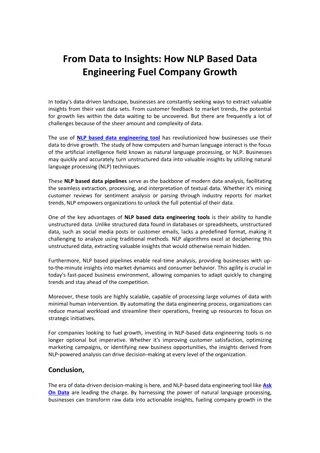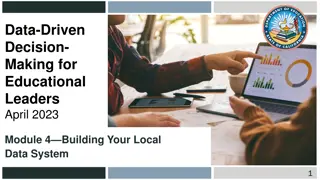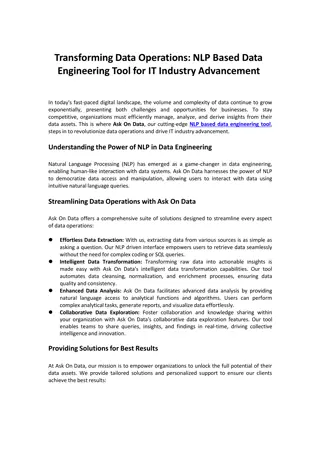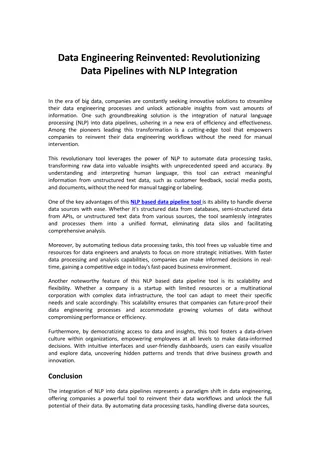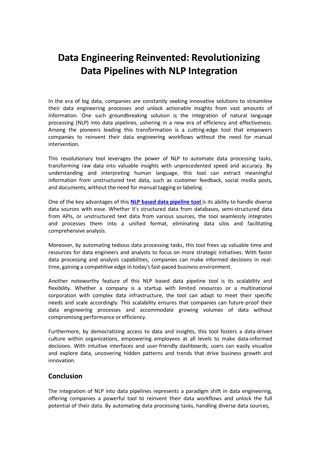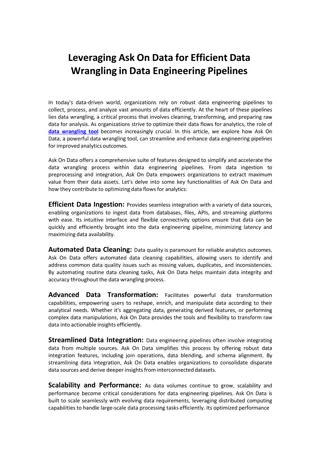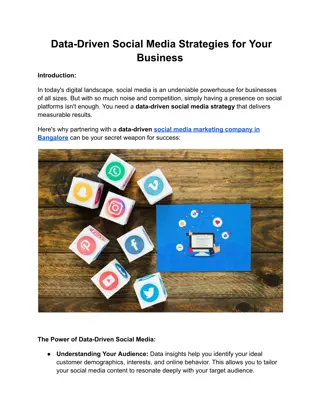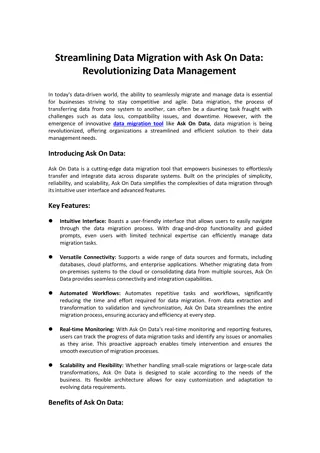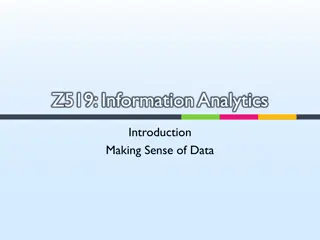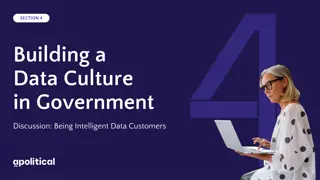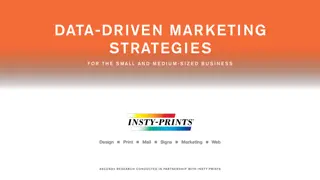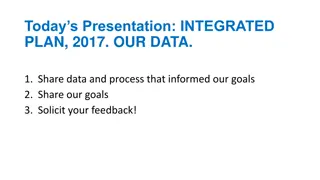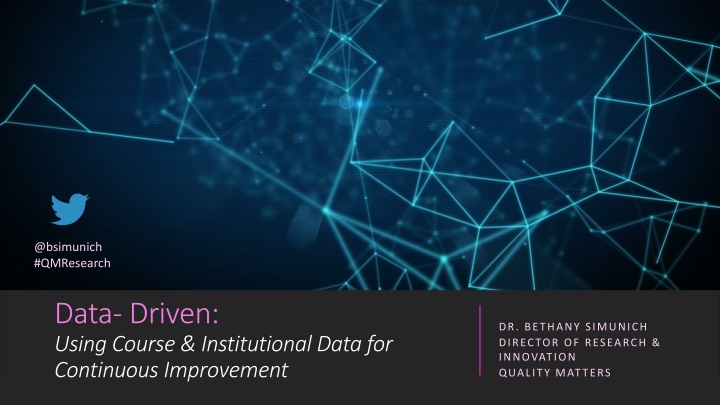
Data-Driven Continuous Improvement in Online Learning
Explore the importance of data collection for quality improvement in online education, learn to overcome obstacles in data analysis, and discover how to interpret data effectively for enhancing online learning experiences.
Download Presentation

Please find below an Image/Link to download the presentation.
The content on the website is provided AS IS for your information and personal use only. It may not be sold, licensed, or shared on other websites without obtaining consent from the author. If you encounter any issues during the download, it is possible that the publisher has removed the file from their server.
You are allowed to download the files provided on this website for personal or commercial use, subject to the condition that they are used lawfully. All files are the property of their respective owners.
The content on the website is provided AS IS for your information and personal use only. It may not be sold, licensed, or shared on other websites without obtaining consent from the author.
E N D
Presentation Transcript
@bsimunich #QMResearch Data-Driven: Using Course & Institutional Data for Continuous Improvement DR. BETHANY SIMUNICH DIRECTOR OF RESEARCH & INNOVATION QUALITY MATTERS
What well cover Identify types of data to collect for continuous quality improvement. Describe common obstacles and barriers in data collection and discuss how to overcome them. Explain how to analyze and interpret data well in order to improve online learning.
Were drowning in data Course grades LMS data, usually on usage Other Institutional data DFW, enrollment, retention, etc. Is it meaningful? Is it the data we need? This Photo by Unknown Author is licensed under CC BY-ND
Usefulness and Interpretation is key Data are not stats or research Individual pieces of factual information Meaning often highly dependent on interpretation and analysis Avoid a rush to judgement Make sure you have the full picture before using the data to make decisions This Photo by Unknown Author is licensed under CC BY
Data Story: Drop/Fail/Withdraw Michael teaches an introductory-level, larger-enrollment online chemistry course. His institution pulls data on D/F/W rates for courses and his course has been identified as having a high D/F/W rate, which impacts his performance evaluation. What might be going on here? Should we assume there s an issue with Michael s teaching? What other information might Michael/his institution need or want before taking some action?
DFW data: A different approach DFW data: A different approach Look at DFW rates over time, and also by level of student preparedness Example: WVU assigns a five-scale institutional rating to all entering students, based on their degree of academic preparedness (IR-1 = highest, IR-5 = lowest). If historical data reveals students have a low-level of preparedness in courses with high DFW rates, consider orientation course to address general readiness or development course to address course preparedness If DFW rates are not correlated with low-preparedness, what else might be going on? Design? Teaching? Student readiness for online? This Photo by Unknown Author is licensed under CC BY
DFW data: Gather more information Bernadette Jungblut, WVU s Director of assessment and retention, recommended qualitative approach as well: Interview faculty quantitative data alone won t tell you why students are struggling Focus groups with students Chemistry course: Adding student support and academic intervention measures did not help Faculty interviews revealed students lack essential math skills, but are initially unaware Result: Course split into two segments; students may be routed to skills course if they do not pass the first segment
Consider: 1. What data do you have? What are the limitations of the data? Step back and Strategize 2. What new data do you need to collect? Why? 3. What is the best way to collect the data? 4. How will you approach interpreting and using the data? What factors could influence the analysis or interpretation?
Examples of Data to Collect for Continuous Quality Improvement This Photo by Unknown Author is licensed under CC BY
What data do you have? DATA FROM STUDENT ASSESSMENT (FORMATIVE & SUMMATIVE) LMS DATA (USAGE DATA, EARLY ALERT DATA, ETC.) INSTITUTIONAL DATA (RETENTION, COMPLETION, ETC.) What do you need? Who are your stakeholders? STUDENT EVALUATIONS (OTHER STUDENT FEEDBACK?) INSTRUCTOR FEEDBACK FACULTY & PROFESSIONAL DEVELOPMENT ATTENDANCE & FEEDBACK
Data Story: Student Evaluations Pat teaches an accelerated 5-week, 100% online Sociology course that is also Writing Intensive. The SEI response rate for her Summer 2019 section was low (3 students out of 20), and the evaluations were poor to average, despite most students getting A s and B s. One student rated everything low and also added comments that Pat was the worst professor he ever had . What might be going on here? How might this data be interpreted? What other information would be needed to appropriately interpret the SEI data? What might Pat do to address this data before the class is taught again? What decisions might Pat make, based on this data?
SEI data: A different approach SEI data: A different approach Compare accelerated format with full-term format Examine level of preparedness for college-level writing Look at timing and sequencing of assignments for both learners and the instructor Augment with student feedback and instructor feedback This Photo by Unknown Author is licensed under CC BY
Calculate workload when designing or re-designing your course, but verify Approximately how long did it take you to complete the entire module/week? Please estimate to the nearest half hour (e.g., 6.5), and only use numbers and a decimal point. Thinking about the amount of work in this module/week, it was: a. Too much/More than I expected b. Just about right c. Not enough/Less than I expected Know what students valued so you know what to trim or expand: Ask about which learning activities were least and most helpful Collecting new types of student feedback
The assignment(s) in this module/week included clear and explicit instructions that enabled me to understand what to do, how I would be evaluated, and how the assignment connected to the learning outcomes. (Likert scale Agree Disagree) Student feedback on design Relates to Standard 3.3: Specific and descriptive criteria are provided for the evaluation of learner s work, and their connection to the course grading policy is clearly explained and Standard 2.4: The relationship between learning objectives and learning activities is clearly stated. (Also SRS 3.1!)
The timing of assignments allowed me to use feedback to improve my work. (Likert Scale Agree Disagree) Student feedback on design Relates to Standard 3.5: The course provides learners with multiple opportunities to track their learning progress with timely feedback, and Standard 5.3: The instructor s plan for interacting with learners during the course is clearly stated.
Potential issues and obstacles This Photo by Unknown Author is licensed under CC BY
Know the limitations of your data Data are facts, usually numerical, but are dependent on your interpretation to be used wisely Numbers alone don t always tell us the whole story Some data (e.g., student and instructor feedback) need a purposeful effort If using data for independent research, consider your needs in advance. This Photo by Unknown Author is licensed under CC BY-NC-ND
LMS data Common examples of data collected in a Learning Management System include: Use/Course Access Activity Log/Views Activity Completion Early alert systems (missed deadlines, low grades, low activity, etc.) Reports geared toward learner engagement This Photo by Unknown Author is licensed under CC BY
Example: LMS Data Mountain Valley College wants to gather data on student engagement in online courses. They gather data from the LMS on time spent in the course, and see a very wide range, even within a single course. What does student engagement mean in terms of LMS data? How might they interpret this LMS data? What other data might they need or want to aid interpretation?
LMS data: A different approach LMS data: A different approach Is there a correlation between LMS engagement and grades? Consider more robust view of engagement If engagement strategies are focused on active and applied learning, examine assessments Consider GS 3 in conjunction with GS 5 This Photo by Unknown Author is licensed under CC BY
Using Data for CQI and OL Research If gathering data for your own research (or institutional research), know what data you need from the start Consider what you want to know (your Research Question), who wants to know, and why If conducting research around QM/Quality Assurance efforts, plan in advance
Example: Before & After QM Omar has been teaching online for five years and took QM s Improving Your Online Course workshop last Spring. Over the summer, he worked hard to revise his course to meet QM Standards, and in September, his course received QM Certification. Omar is excited to see the grades of students this semester, since they re in the revised, QM-certified course, and hopes the grades are proof that QM works . If Omar compares student grades before the QM Certification to grades after QM Certification, what other information would he need to get the full picture of any grade changes? Why might final grades not provide proof that QM works ? What other data might he analyze or collect to enable him to better understand potential effects of revising his course to meet QM Standards?
Before/After QM data: A different approach Before/After QM data: A different approach Get the full picture of Before Document any/all changes made Consider confounding variables (Online Quality Pie): Teaching/Delivery Student Preparedness Content LMS & Institutional Infrastructure Gather student feedback This Photo by Unknown Author is licensed under CC BY
Based on todays discussion, what are new pieces of data you might want to collect? Using data to inform and improve What about data we might not collect at all, such as faculty development? How can we have better institutional conversations about bridging the gap between the data we have and the data we need?


